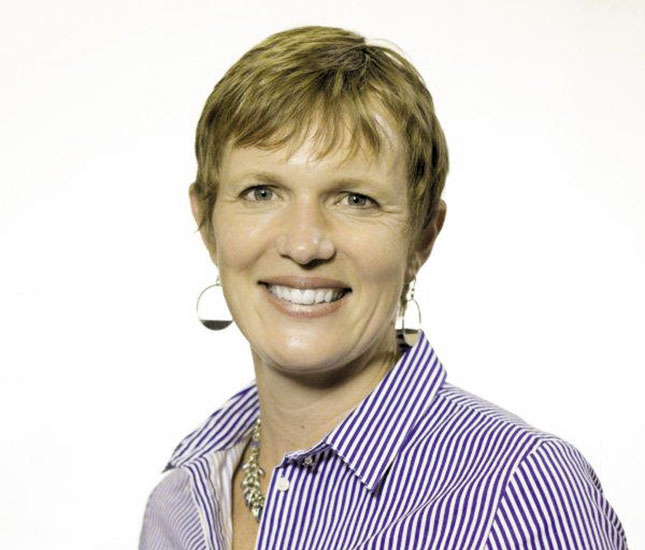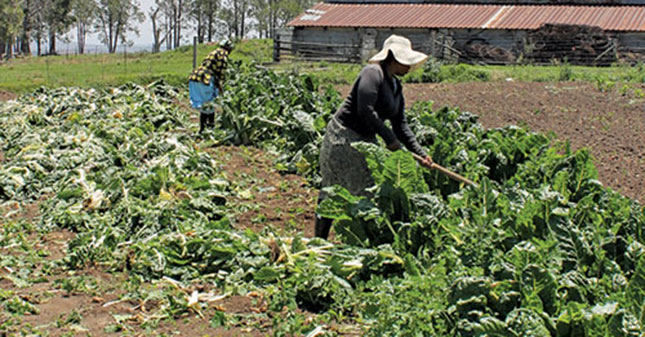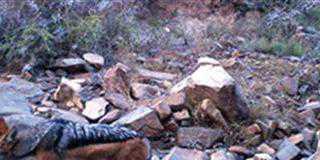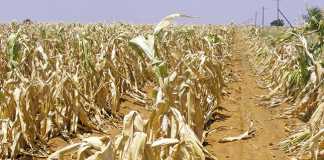
Photo: Supplied
Please explain the process and sources available for the financing of commercial grain and livestock farmers in South Africa.
All agricultural financiers have to manage their credit risk. The four credit assessment criteria that financiers, especially commercial banks, usually apply when evaluating a farmer’s credit application are:
- Financial history;
- Management profile;
- Cash repayment ability;
- Collateral.
READ:Mixed reactions from agri-leaders to SONA 2017
A farmer’s credit application should centre on cash repayment ability; the other three criteria provide support to achieve the required cash repayment ability. A farmer’s financial history will be scrutinised by a financier to establish whether the projections in terms of the predicted revenue and expenses are realistic. A farmer’s management profile can be difficult to assess but is centred on his ‘soft skills’, including experience, production techniques, labour practices and the marketing of produce.
Finally, the value of collateral will become critical when a farmer defaults on credit repayments and the financier has to recover the loan.
A farmer therefore has to ensure that a well-prepared credit application is provided to a financier to optimise the chance of obtaining agricultural credit. The financier, on the other hand, should provide clear guidelines to a farmer on what is regarded as a good credit application.
The sources of financing available to commercial farmers in South Africa include:
- Agricultural companies (the previous agricultural co-operatives);
- Commercial banks;
- The Land Bank; and
- Other privately-owned institutions offering either agricultural finance or corporate farming initiatives.
Given the opportunity, what would you change in agricultural financing for local primary producers?
In the case of commercial farmers, the drastic increase in agricultural production input costs worldwide and the fact that South Africa’s agricultural land does not provide sufficient collateral to cover production input costs have resulted in an increased demand for alternative production finance.
Farmers do not qualify for traditional production credit due to not having sufficient collateral in the form of agricultural land. And if they are considered for credit, the interest rate offered is increased due to the increased risk the farmer poses to the financier. Furthermore, the ownership of agricultural land in South Africa is currently a contentious issue.
I would therefore like to see financiers offer alternative forms of collateral other than agricultural land in their financing models. However, a clear distinction has to be drawn between commercial farmers and emerging/smallholder farmers. For the financier, the challenges faced in financing each of these categories are different.
How does farmer financing in South Africa compare with the process in other African countries such as Zambia?
Firstly, the profile of farmers differs vastly between South Africa and the rest of Africa. In Zambia, about 85% of the farmer population are small-scale farmers cultivating less than 5ha. They do not own land. This is in contrast to South Africa, where commercial farmers are largely responsible for providing local food security.
Secondly, unlike the case in South Africa, agricultural land in Zambia and the rest of Africa is generally government-owned. Such land can therefore not be used as collateral in agricultural lending. South African commercial banks operating in the rest of Africa therefore have to change their financing model.
Thirdly, in the rest of Africa, donor organisations and non-governmental organisations are role players in either financing at market-reduced interest rates or providing production inputs to smallholder farmers.
Agricultural financing in Africa remains challenging. Despite this, different models have been found to finance smallholder farmers successfully. One alternative to traditional financing that is successful in the rest of Africa is the concept of value chain financing (VCF).
This is a financing product that builds on existing good relationships between value chain participants which include farmers, input suppliers, processors, traders, exporters and retailers. It reduces the credit risk posed to commercial banks and lowers the cost of financing to the farmer. But it requires a holistic approach from a financier. I’ve documented Zambian case studies where commercial banks successfully applied the VCF principle to smallholder farmers.
What kind of financing, if any, is available for emerging and smallholder farmers in South Africa?
There are a number of institutions offering, among others, grants, personal loans for enterprise purposes or short- to medium-term production loans to emerging and smallholder farmers. Such institutions include (but are not limited to) the Land Bank, Micro Agricultural Financial Institutions of South Africa (Mafisa), the Industrial Development Corporation (IDC), the National Empowerment Fund (NEF), and commercial banks.
These institutions realise that emerging and smallholder farmers do not qualify for ‘balance sheet’ financing, in other words, they do not have collateral in the form of agricultural land. Such institutions could, however, utilise movable assets as collateral.
An alternative is the VCF model, as used in Zambia, that I described earlier.
How do you expect the current drought to affect financing for primary producers?
Livestock farmers might have to sell their livestock to meet loan obligations. Farmers will then struggle to rebuild their herds.
Grain farmers will either have less produce to sell, or none at all. They will also struggle to meet their loan obligations. For both types of farmer, there will be an increased risk in credit defaults. The financier will then have to fall back on the collateral required when extending credit. As a result, many farmers might lose their land.
What is your opinion about the possibility of government subsidies for the agriculture sector?
I have a mixed view. On the one hand, South African farmers have to compete with farmers in developed countries who are heavily subsidised, which is unfair. On the other hand, because our farmers have to compete against heavily-subsidised farmers, they are some of the best in the world. Our farmers know how to manage costs without comprising on quality, and know that they cannot rely on the government to make up for their inefficiencies.
What is the biggest mistake made by primary producers when obtaining production financing?
In my opinion, it is the way that many producers prepare their business plan when applying for agricultural credit. Farmers should ensure that their projections are reasonable and that the assumptions used are realistic. They must ensure that the cash flow repayment ability is conservative to reduce any unnecessary pressure of default. For example, if there is an unexpected increase in, say, fertiliser, the cash flow projections should be able to absorb it and still meet the loan obligations.
How should farmers manage the funds?
They should plan carefully and regularly compare the cash flow projections with the actual flow. If there are large discrepancies, they must communicate with their financier.They should also manage their price risk to optimise cash inflow.
How will financing of primary producers change in the next 10 years?
The role of agricultural finance will move from financing using agricultural land as primary collateral. As agriculture has to feed the increased population, the role of lending has to change. The focus will fall more on the developmental role of agriculture in terms of financing mechanisation, conservation farming and value-adding practices, inter alia. Hopefully, 10 years from now, strong relationships will have formed between all players of the value chain, making agriculture the place to be.
Email Prof Sanlie Middelberg at [email protected].
This article was originally published in the 29 January 2016 issue of Farmer’s Weekly.













